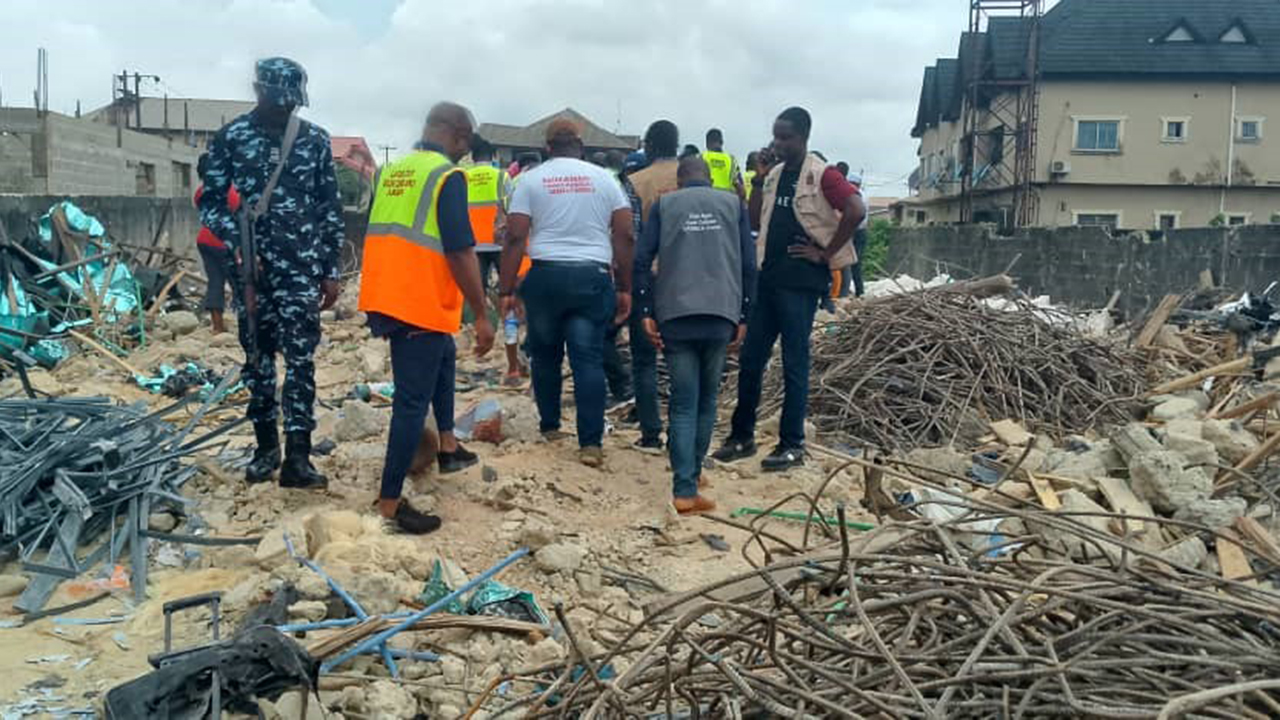
PHOTO: BERTRAM NWANNEKANMA
A Professor of Environmental and Engineering Geology at the University of Ibadan (UI), Prof. Ibrahim Oyediran, has outlined ways to prevent building collapses in Nigeria.
Oyediran said that engineering geologists are crucial in preventing building collapses and mitigating the environmental impacts of construction activities in Nigeria.
The professor lamented that Nigeria has reached a point where “we can no longer afford to pay lip service to the critical role played by engineering geologists and geologists in general in delivering sustainable structures.”
He made this statement on Friday while delivering a valedictory lecture in honour of Professor Gabriel Oladapo Adeyemi, who retired from the University of Ibadan after reaching the age of seventy.
Speaking on the topic, “Engineering Geology and the Sustainability of Structures and the Environment: The Edunabon Manuscripts,” Oyediran noted that Nigerian roads keep failing, and buildings continue to collapse because the country neglects environmental considerations when placing structures.
He said, “Our roads keep failing, our buildings keep collapsing, and we refuse to take the environment into account when placing structures.
“ We design beautiful structures without considering material suitability, bearing capacity, environmental impact, and sustainability.
READ ALSO: Oborevwori mourns pupil who died in school building collapse
“We clearly place more value on quantity than on quality, and we don’t value human life. How do we expect to move forward when we haven’t even addressed the basics?”
While acknowledging that not all building collapses are due to material quality, Prof. Oyediran said that by ensuring geological conditions and processes are fully considered, engineering geology contributes to the creation of structures that are safe, durable, resource-efficient, and environmentally responsible.
This, he said, is vital for the well-being, progress of society, and sustainability of the built environment.
He added that engineering geologists are indispensable at every stage of infrastructure development because they “bring a unique perspective that helps build resilience to natural hazards, solve environmental problems caused by human activities, and reduce the cost and risk of building and infrastructure construction, thanks to their knowledge, skills, and understanding of the interfaces between science, engineering, and the natural and built environments of the past, present, and future.”
He further explained that engineering geology promotes the delivery of infrastructure that is resilient to natural hazards, thereby reducing the risk of catastrophic structural failures due to geological events and enhancing sustainability by preventing premature failure and reducing maintenance needs, which ultimately enhances public safety.
“This proactive approach not only saves lives but also prevents economic losses by avoiding infrastructure failures,” he said.
Once infrastructure is built, engineering geologists continue to play a role in ongoing maintenance and monitoring, ensuring long-term stability, performance, and safety through regular geological assessments, inspections, and the use of structural health monitoring technologies. This continuous monitoring helps identify early signs of geological issues that could compromise structural integrity, such as ground subsidence or slope instability, allowing for timely interventions and repairs.
Understanding the properties of soil and rock ensures that foundations and other structural elements are designed to withstand the loads and stresses they will encounter, ensuring the stability and safety of buildings, bridges, dams, and other structures, ultimately contributing to the longevity of the infrastructure.
“The goal is to ensure the stability and integrity of structures by analysing soil and rock properties to determine appropriate foundation types and depths, ensuring that foundations are designed to support structures under various load conditions and environmental factors,” he said.






